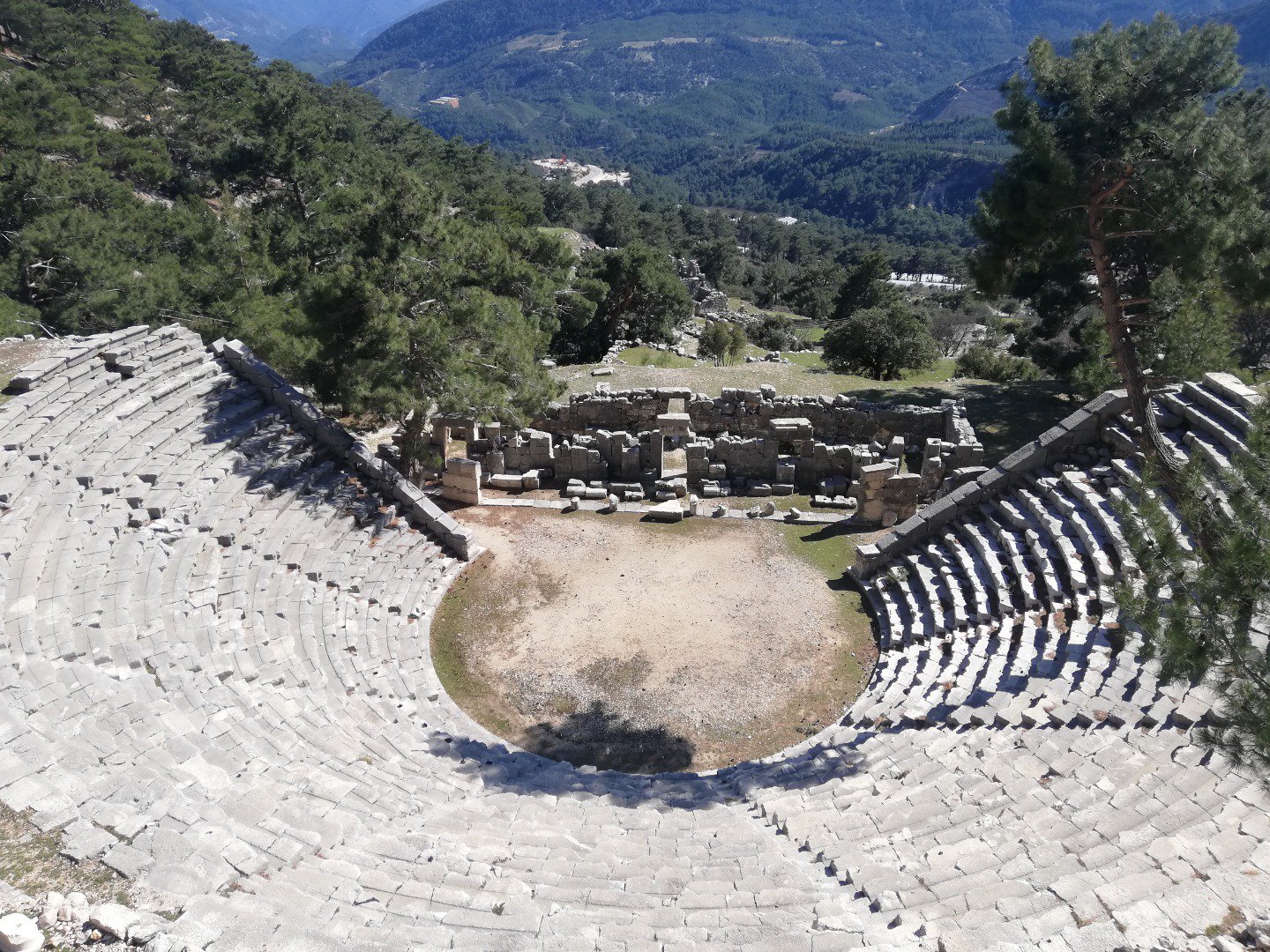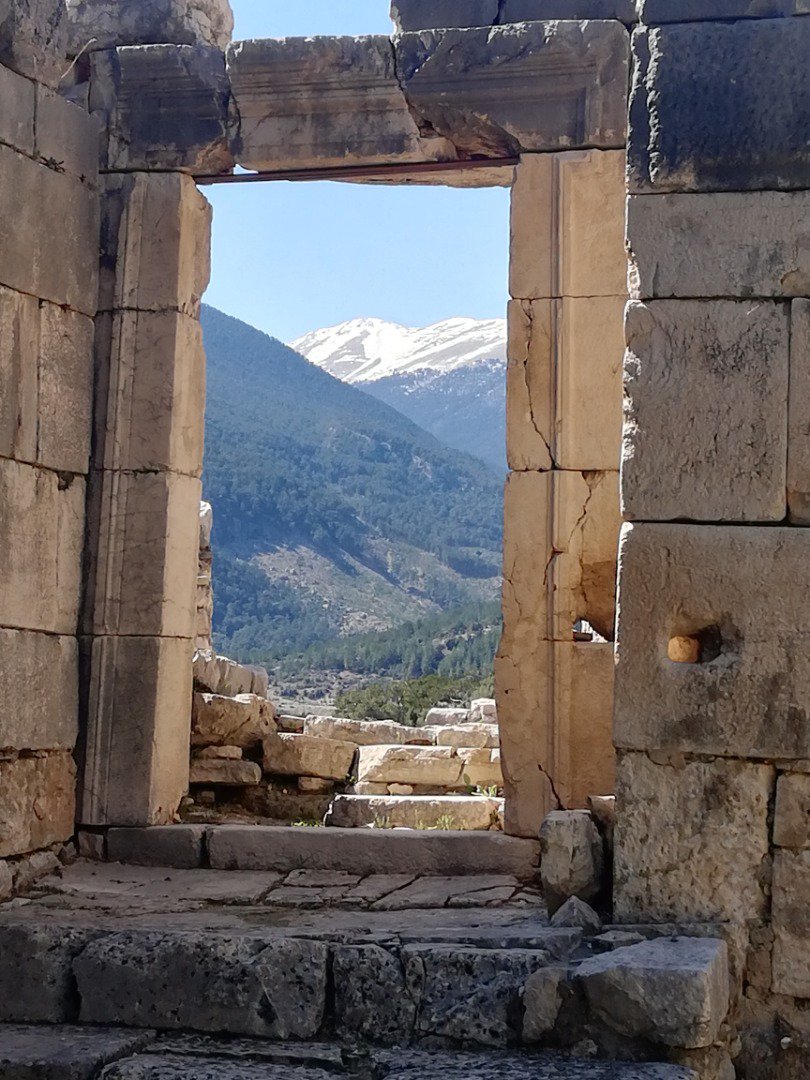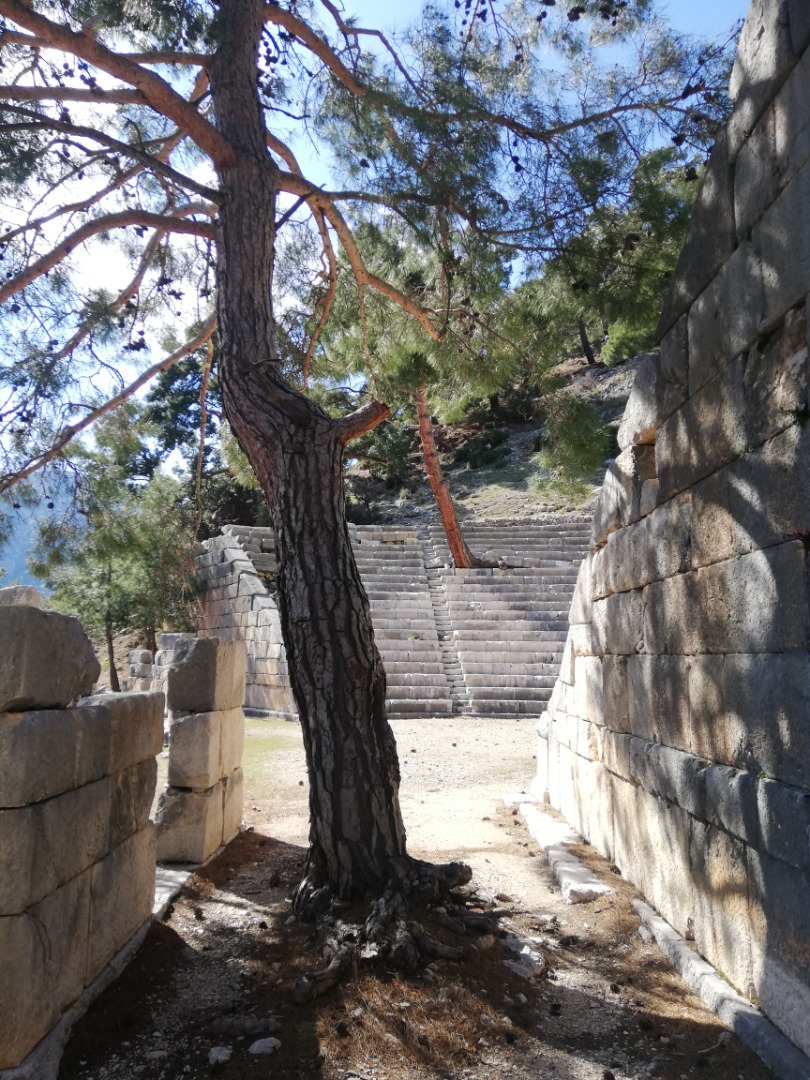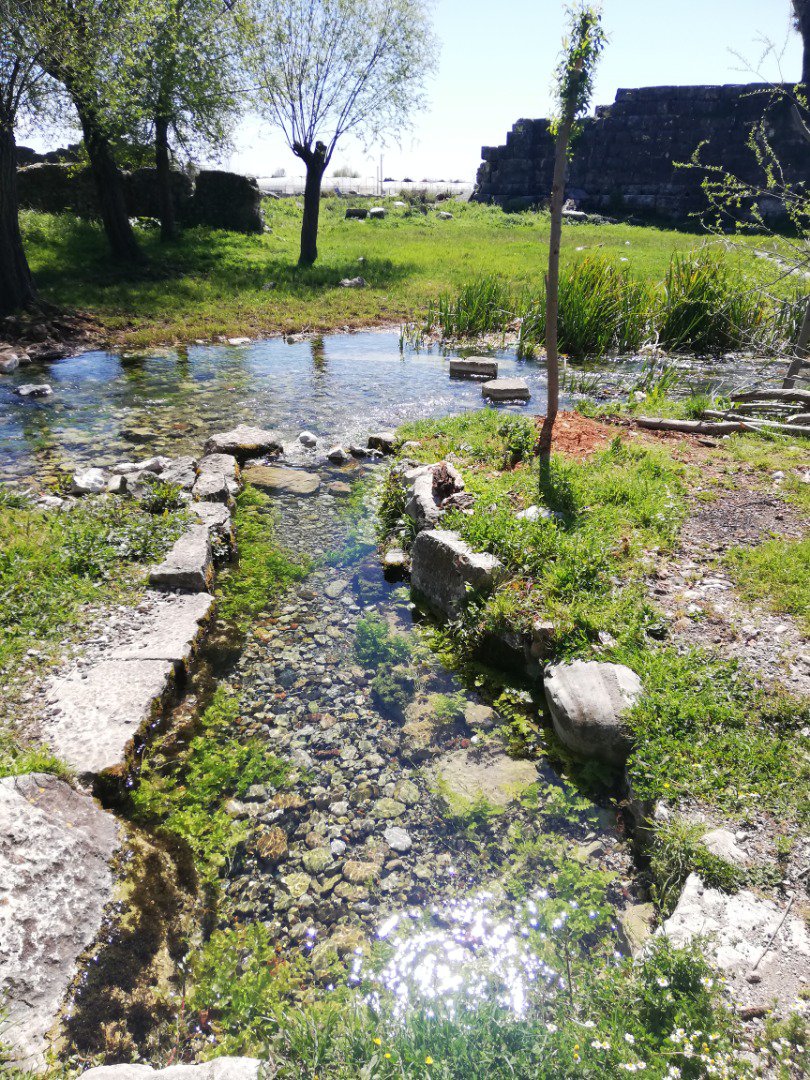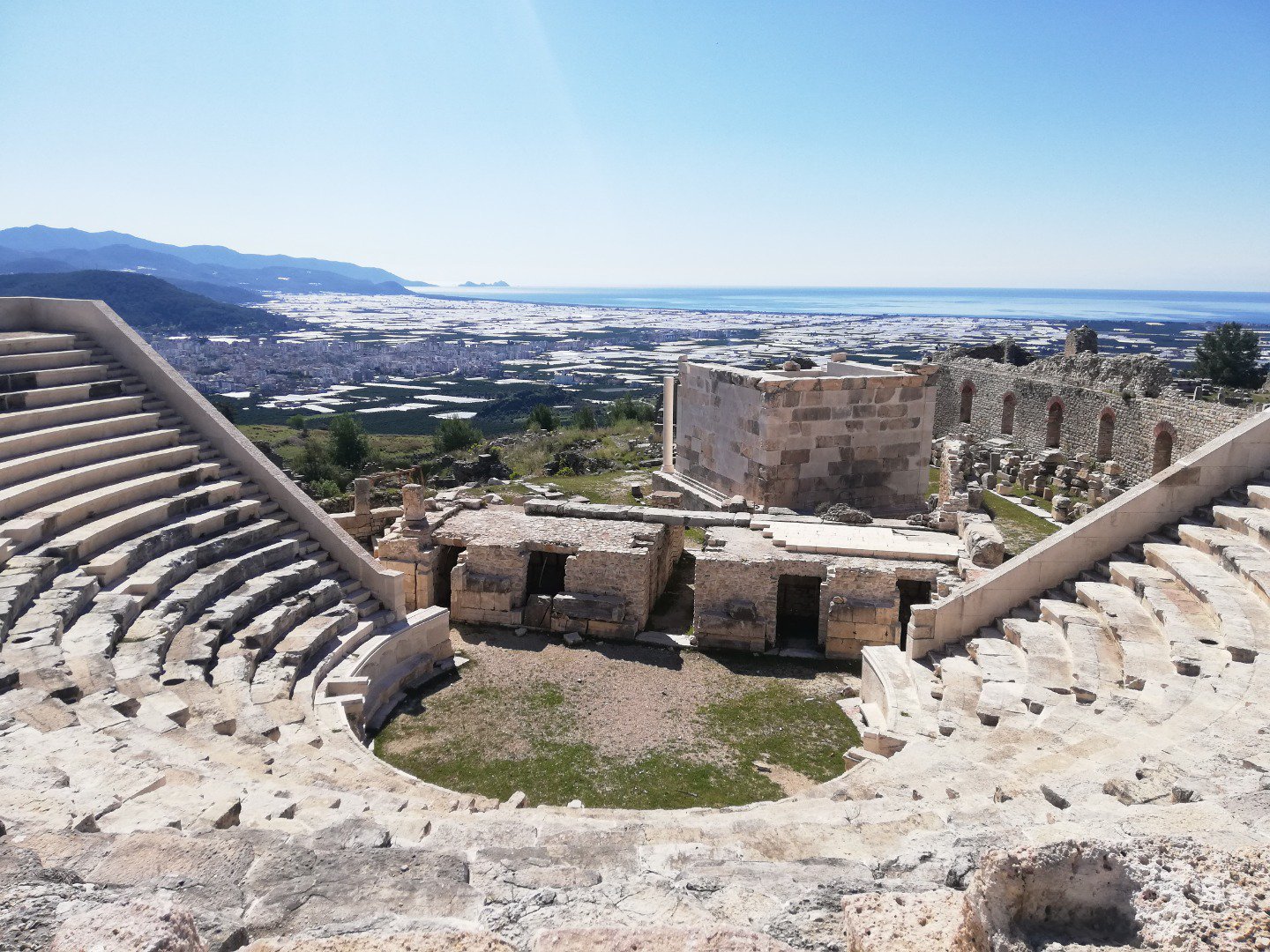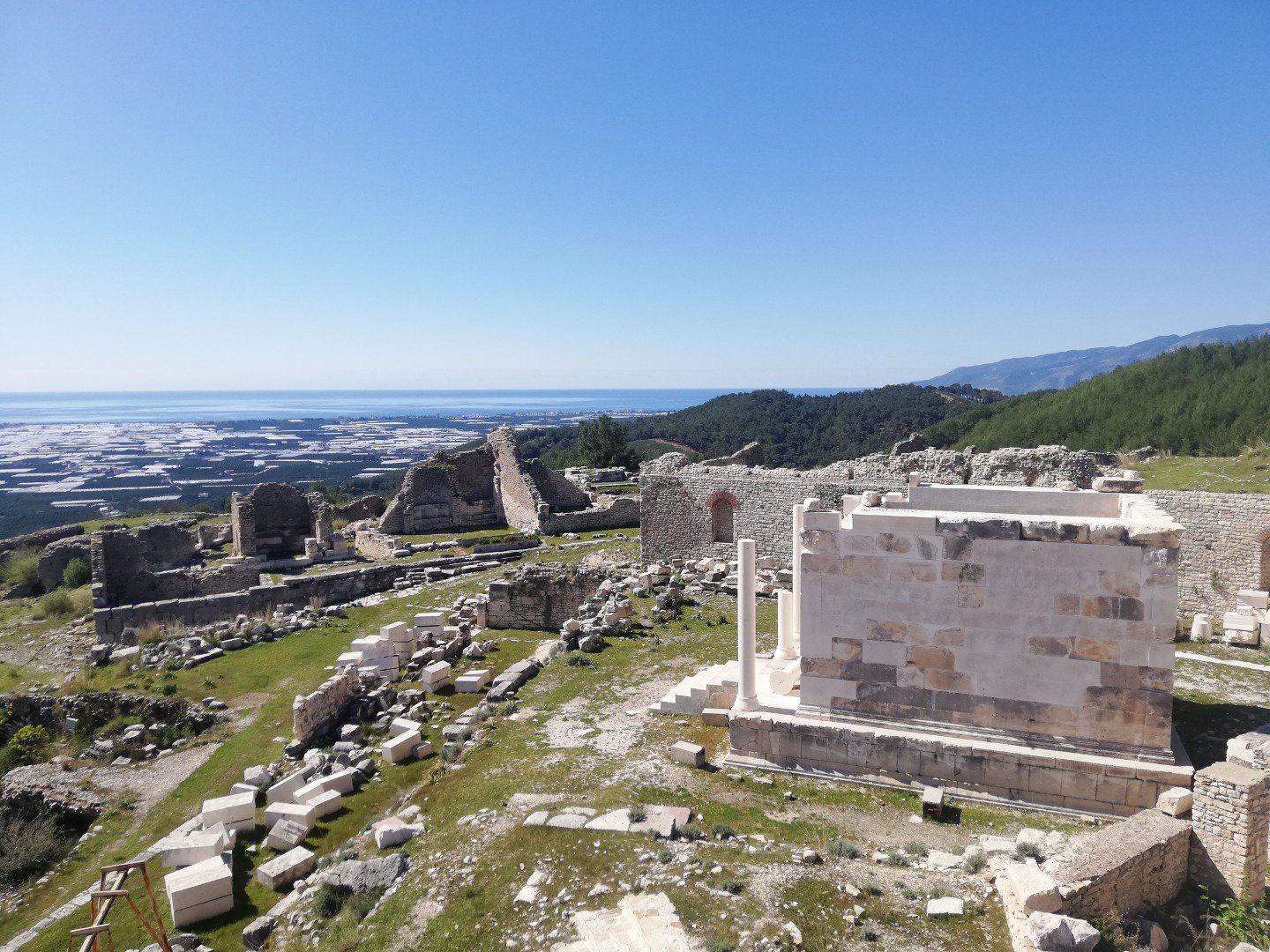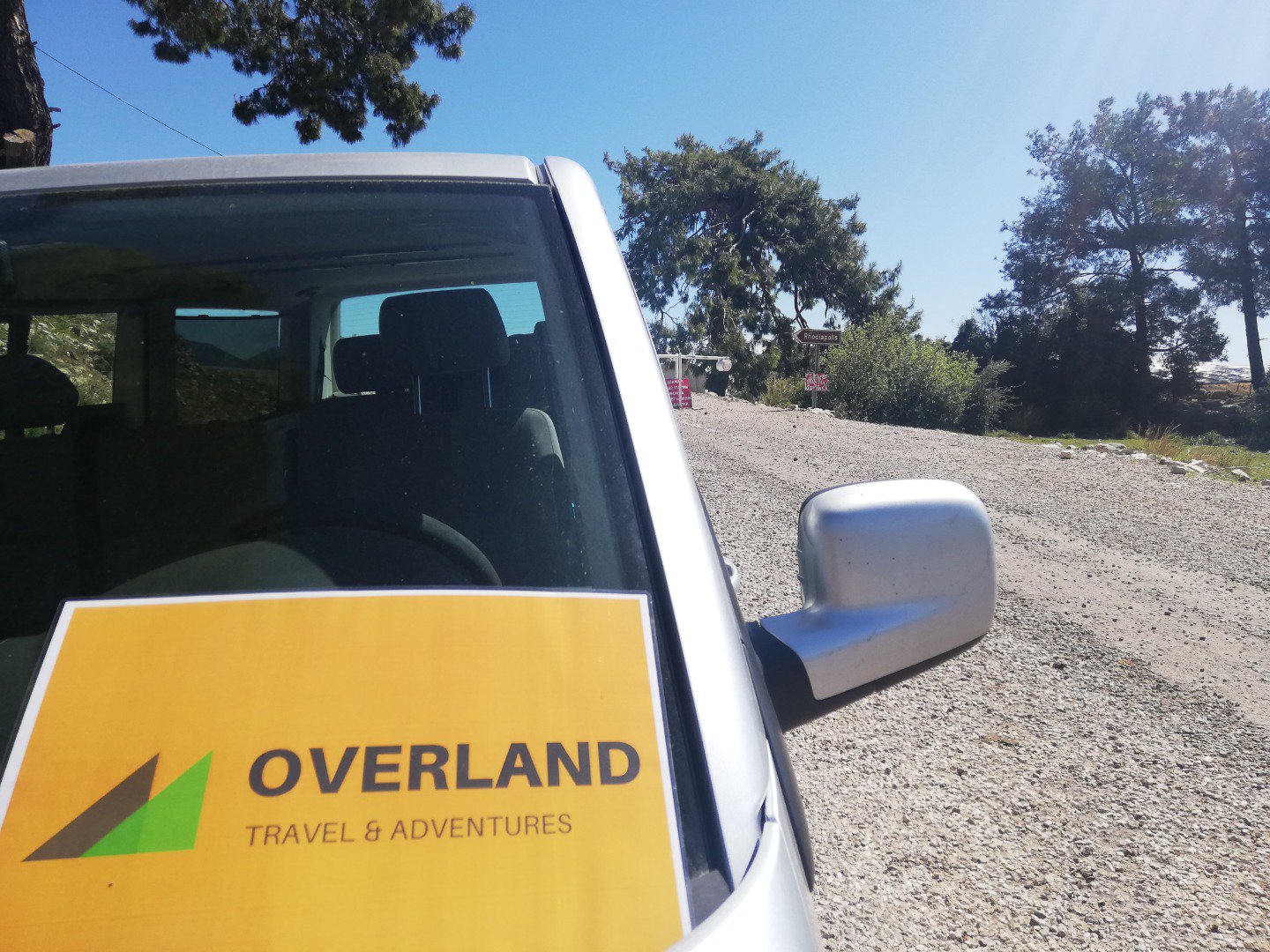Rhodiapolis Limyra Arykanda Elmali
 Initial region
Fethiye, Antalya
Initial region
Fethiye, Antalya
 Duration
1 Day
Duration
1 Day
 Language
English
Language
English
 Price
€ 750 / person
Price
€ 750 / person
Rhodiapolis Tour, city of famous Opramaos
Limyra, water springs borning in teples and ruin
Arykanda ancieny city, eagle nest theatre, stadium, hellios temple
Elmali, a dynamic living Turkish nomadic metropolis
We drive to Rhodiapolis and start our visit in Rhodiapolis.
According to Hecataeus of Miletus, Rhodiapolis received its name from the Rhodians who had founded this town. On the other hand, Theopompusnote states that Rhodiapolis was named after Rhodos, a daughter of the seer Mopsus, who is mentioned in the Iliad and is identical to a king who once ruled in Cilicia and Pamphylia named Mukšuš.
However, the original Lycian name - known from a/o coins - was Wedrei, also written as Wedrennehi and Wedrenni. The existence of a non-Greek name suggests that there was a settlement already before the Rhodian colonisation.
The tomb of Opramoas, currently being reconstructed
Rock tombs and inscriptions prove that Rhodiapolis was a town of some importance in the Classical age, but it is not often mentioned in our sources. Coins are the best evidence that in the Hellenistic age, the town was a member of the Lycian League. A very long inscription documents the activities of an extremely wealthy citizen, Opramoas, who lived in the second century CE and acted as benefactor of his own town and several towns in the neighborhood. It is remarkable, however, that the town is hardly mentioned in our sources.
Monuments
In spite of Rhodiapolis' age, most monuments date from the Roman and Byzantine periods: a theater, a bathhouse, an agora with a stoa, a sebasteion (sanctuary for the imperial cult), a number of temples, a church, several cisterns, houses, and necropolises.
Later we have Limyra Tour.
Limyra was a small city in ancient Lycia on the southern coast of Asia Minor, on the Limyrus River. Already flourishing in the second millennium BCE, the city was one of the oldest and most prosperous in Lycia; it gradually became one of the finest trade settlements in Greece.
In the 4th century BCE Pericles adopted it as the capital of the Lycian League; subsequently it came under control of the Persian Empire..After Alexander the Great ended Persian rule, most of Lycia was ruled by Ptolemy Soter; his son Ptolemy II Philadelphos supported the Limyrans against the invading Galatians and the inhabitants dedicated a monument, the Ptolemaion, to him in thanks.
The five necropolises from this period demonstrate the city's importance. The mausoleum of Pericles is particularly notable for its fine reliefs and exquisite sculptures such as Perseus slaying Medusa and one of her sisters.
Limyra is mentioned by Strabo (XIV, 666), Ptolemy (V, 3, 6) and several Latin authors. Gaius Caesar, adopted son of Augustus, died there (Velleius Paterculus, II, 102).
The Romans cut a theater into the hill which held 8000 spectators. It was commissioned in the second century AD by important Lycian benefactor named Opramoas of Rhodiapolis. Also from this period are a bathhouse with a complex heating system and the colonnaded streets. The Roman Bridge at Limyra, east of the city, is one of the oldest segmental arch bridges in the world.
We make Arykanda Tour.
Arykanda is one of the oldest Lycian cities. Although the city dates back to the 7th century BCE, most ruins are from the 5th century BCE through the 3th century AD. Like other Lycian cities, Arykanda was under Persian rule in the 5th century BCE. Alexander the Great assumed control in 333 BCE and after his death; first the Ptolemies, then the Seleucids and finally Rhodes ruled the city. Later the city was in the Lycian League. Emperor Claudius imposed direct Roman rule in 43 AD. Christianity arrived as early as the 3rd century. Arykanda survived through late Roman times, until the inhabitants moved to Arif, a separate site south of the modern road, in the 6th century.
Near the car park are the remnants of a Sebasteion or imperial cult temple built during the reign of Emperor Trajan. Remnants from this temple were reused to construct a late Roman basilica church and bishop’s palace in the 5th century AD which still contains traces of wall paintings and floor mosaics covered with a modern roof.
On the lowest terrace stands a largely intact bath complex supported with arches, converted into a bath-gymnasium after an earthquake in 141, and later refurbished. Higher up between the bouleuterion and the agora are remains of a small bath and a fountain. Arykanda obtained water from a nearby spring and channeled it to two large cisterns.
A necropolis runs along the street above the bath complex to the east with impressive barrel-vaulted monumental tombs, temple tombs and sarcophagi. One temple tomb on a podium contains an inscription and Corinthian façade decorated with a lion relief, another displays winged figures on either side of a bust over the lintel.
To the north higher up is a wide flat 4th century agora, once enclosed on three sides with a portico. In the center of the agora are the ruins of a temple dedicated to Tyche. On a higher terrace behind the agora are foundations of a temple dedicated to Helios. Archaeologists discovered two altars here, one identifying Helios by inscription and the other by a depiction of Helios with a halo.
Further up is a 2nd century odeon, once decorated with colored marble. The odeon portico was paved with floor mosaics and led to a triple portal with a statue of Emperor Hadrian, now at the Antalya Museum, flanked by masks of deities. Stairs lead up to the 1st century BCE theatre on the next terrace with 20 rows of seats built into the hillside.
To the west of the theatre a long stoa passes 12 shops and leads to the bouleuterion with seats cut out of the slope of the mountain. On the next terrace up above the theatre is the half-size 1st century BCE Hellenistic stadium with seats only on the north side cut into the mountainside facing south.
Lastly we drive along Avlan Lake with the view of Cedrus Libani Forest and reach Elmali.
Elmalı is a small plateau at the head of a long upland valley in the Beydağları range of the western Taurus Mountains, surrounded by high peaks including the 2500m Elmalı Mountain. Aside from the town of Elmalı, the district includes two other small towns (Akçay and Yuva) as well as villages. The area is watered by streams running off the mountains. Although close to the Mediterranean, Elmalı is high in the mountains and has an inland climate of cold winters and hot summers, (although still much cooler than the coast). Near to Lake Avlan there is an area of cedar forest, rare in Turkey.
We visit old town and bazaar and markets and mosque
We return home
- Private Tour Guide
- Private vehicle,driver
- Entrance fees
- Drinks, Meals
Prices 1 Pax: 315.00 € 2 Pax : 200€ 3 Pax: 175€ 4 Pax:150€ 5-6pax: 140 € 7-9 Pax: 125 € 10-12 Pax: 100 € This tour could be customized and we can pick you from Fethiye, Gocek, Kas, Kalkan, Dalyan, Marmaris or Antalya Please contact us for more information Programmes may customized and personalized due to your requests. The cost of this tour is changeable according to your travel dates and number of your group Please let us know your travel dates to check our private tour cost. You can make any changes on the programe, if our programs are not suitable for you We can work together on your itinerary.



